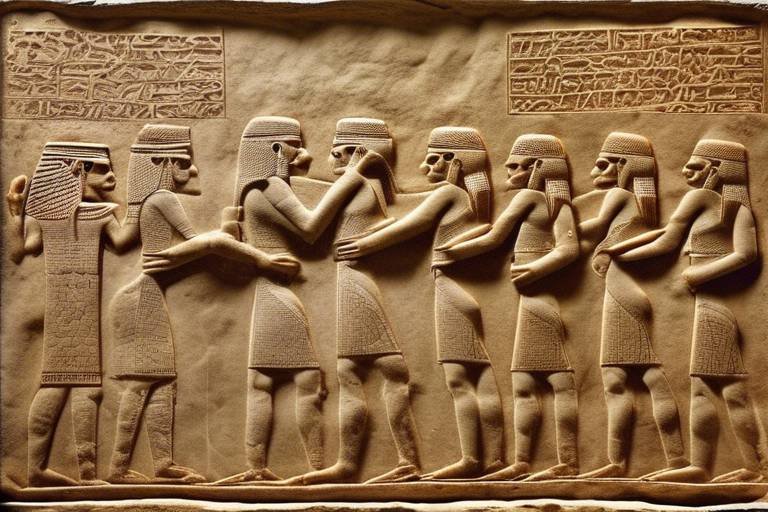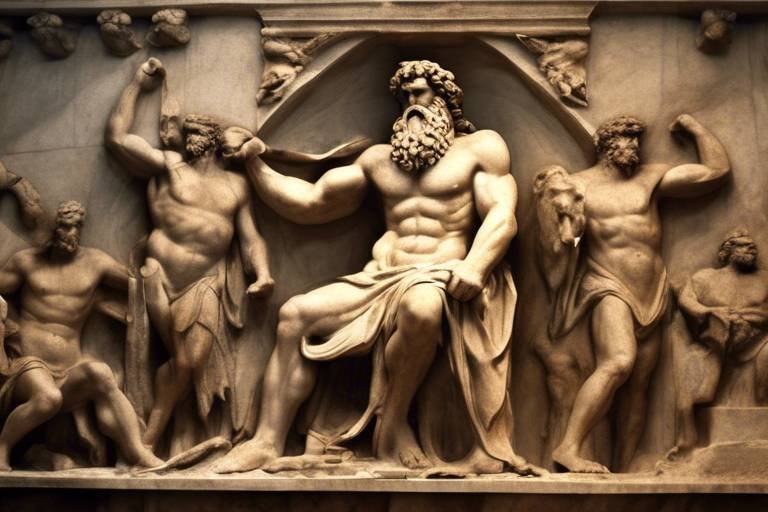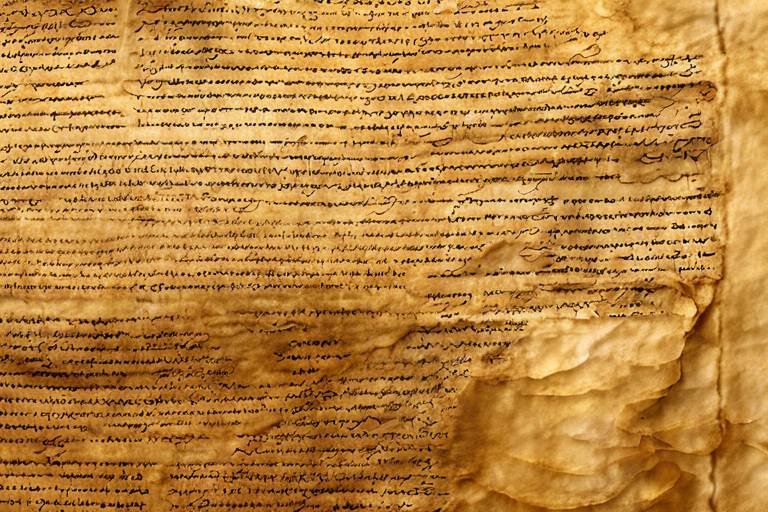The Secrets of Ancient Egyptian Papyrus
Ancient Egyptian papyrus holds within its fibers the secrets of a civilization that thrived along the banks of the Nile. This remarkable writing material, derived from the papyrus plant, played a pivotal role in shaping the history and culture of ancient Egypt. Let us embark on a journey to unravel the mysteries surrounding the creation, significance, and legacy of this extraordinary medium of expression.
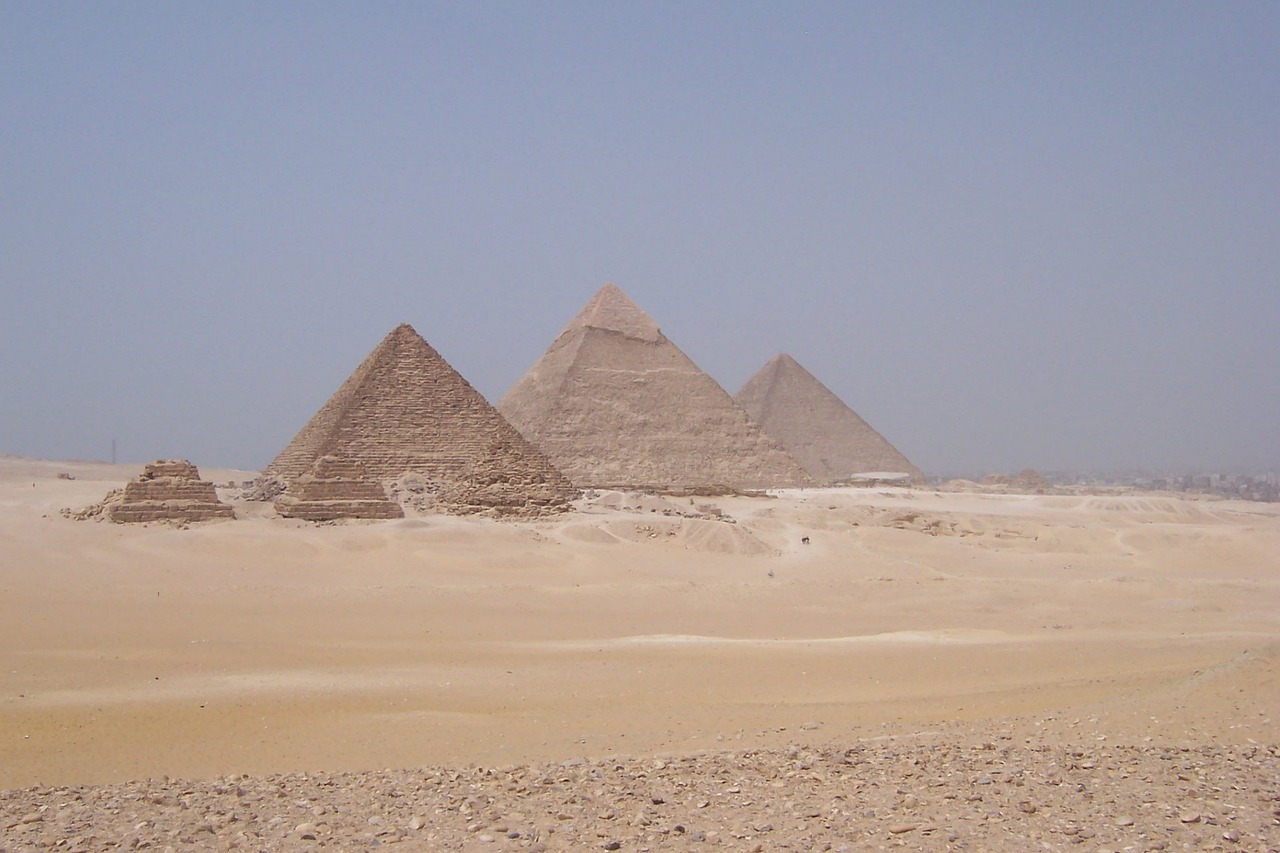
History of Papyrus in Egypt
Exploring the historical significance and creation process of ancient Egyptian papyrus, shedding light on its role in preserving knowledge and culture from the past.
Papyrus holds a rich history in ancient Egypt, dating back to around 3000 BCE. The Egyptians were the first to utilize this versatile material for writing, creating a monumental shift in the way information was recorded and preserved. Initially, papyrus was used for administrative purposes, such as keeping records of trade and taxes. However, its significance quickly expanded to encompass literature, religious texts, and even medical documents. This transition marked a pivotal moment in the evolution of writing materials, solidifying papyrus as a symbol of knowledge and civilization.

How Papyrus was Made
The process of making ancient Egyptian papyrus was a meticulous craft that required skill and patience. It all began with the papyrus plant, which grew abundantly along the banks of the Nile River. The first step in creating papyrus sheets was to harvest the tall reeds of the plant and peel away the outer green layers to reveal the inner white pith.
Once the pith was exposed, it was sliced into thin strips and laid out in two layers, one horizontal and the other vertical, to form a grid-like pattern. These layers were then pounded together using a mallet to ensure they adhered to each other. The next crucial step involved soaking the layers in water from the Nile to help bind them further.
After soaking, the papyrus sheets were pressed and dried under heavy weights to remove excess moisture and flatten the surface. The final result was a smooth, sturdy writing material that could withstand the test of time. The ancient Egyptians had mastered the art of papyrus-making, creating a versatile medium for recording their history and culture.

Significance of Papyrus Scrolls
The in ancient Egyptian society cannot be overstated. These scrolls served as crucial vessels of knowledge, carrying a wide array of texts that provided insights into various aspects of life in that era. From religious scriptures and magical spells to administrative records and literary works, papyrus scrolls were instrumental in documenting and preserving the rich cultural heritage of Egypt.
One of the most remarkable aspects of papyrus scrolls was their versatility. They were used for a multitude of purposes, ranging from religious ceremonies to everyday communication. The papyrus scrolls were not only a medium for writing but also a symbol of power and authority, often adorned with elaborate designs and hieroglyphic inscriptions that added to their mystique.
Moreover, the extended beyond their practical utility. They were revered as sacred objects, believed to possess magical properties that could protect the texts contained within from harm. The intricate craftsmanship involved in creating these scrolls further elevated their status, turning them into objects of beauty and reverence.
Through the study of papyrus scrolls, modern scholars have gained invaluable insights into the beliefs, customs, and daily life of ancient Egyptians. The texts preserved on these scrolls have provided a window into a bygone era, allowing us to piece together the puzzle of Egypt's rich history and cultural heritage. The lies not just in their historical value but also in the connections they create between past and present, bridging the gap between ancient civilizations and contemporary society.

Symbolism and Art on Papyrus
Ancient Egyptian papyrus goes beyond being just a writing material; it is a canvas of cultural symbolism and artistic expression. The intricate designs and symbolic motifs found on papyrus scrolls offer a window into the beliefs, values, and daily life of the ancient Egyptians. These artistic representations not only adorned the scrolls but also carried deep meanings and stories, serving as visual narratives of a rich and vibrant society.
Symbolism on papyrus was a language in itself, communicating religious beliefs, mythological tales, and historical events. Each symbol, whether a deity, an animal, or a geometric pattern, held significance and conveyed a message to those who could decipher its meaning. Through the art on papyrus, we can unravel the complex tapestry of ancient Egyptian culture, understanding their worldview and spiritual practices.
Moreover, the art on papyrus was not merely decorative but served a functional purpose as well. It played a crucial role in the religious ceremonies, funerary rites, and everyday rituals of the ancient Egyptians. The intricate details and vibrant colors on papyrus scrolls reflected the beauty and harmony that the Egyptians sought to emulate in their lives, bridging the gap between the earthly realm and the divine.
Examining the symbolism and art on papyrus is like deciphering a cryptic code that unlocks the secrets of an ancient civilization. Each stroke of the brush, each symbol carefully inscribed on the papyrus surface, tells a story that transcends time and speaks to the universal human experience of creativity, spirituality, and cultural identity.

Preservation Challenges
Preserving ancient Egyptian papyrus poses significant challenges due to the delicate nature of these historical artifacts. The primary threat to the longevity of papyrus scrolls is the passage of time, leading to natural degradation and deterioration. Additionally, the impact of climate conditions, such as humidity and temperature fluctuations, can accelerate the deterioration process, making proper storage and handling crucial for conservation efforts.
One of the key preservation challenges is the fragility of papyrus itself. The organic material is susceptible to damage from exposure to light, air, and moisture, requiring specialized techniques and controlled environments for storage. Conservation experts must carefully monitor the condition of papyrus scrolls to prevent irreversible damage and ensure their longevity for future generations.
Handling ancient papyrus presents another obstacle to preservation efforts. The delicate nature of the material requires expert knowledge and skill to prevent tearing or breakage during examination or research. Proper training and protocols are essential to minimize the risk of accidental damage and ensure the integrity of these valuable historical documents.
Conservationists employ a variety of methods to protect and preserve ancient papyrus scrolls, including techniques such as encapsulation, stabilization, and environmental controls. By implementing these strategies, experts can mitigate the effects of time and external factors, safeguarding these invaluable artifacts for continued study and appreciation.
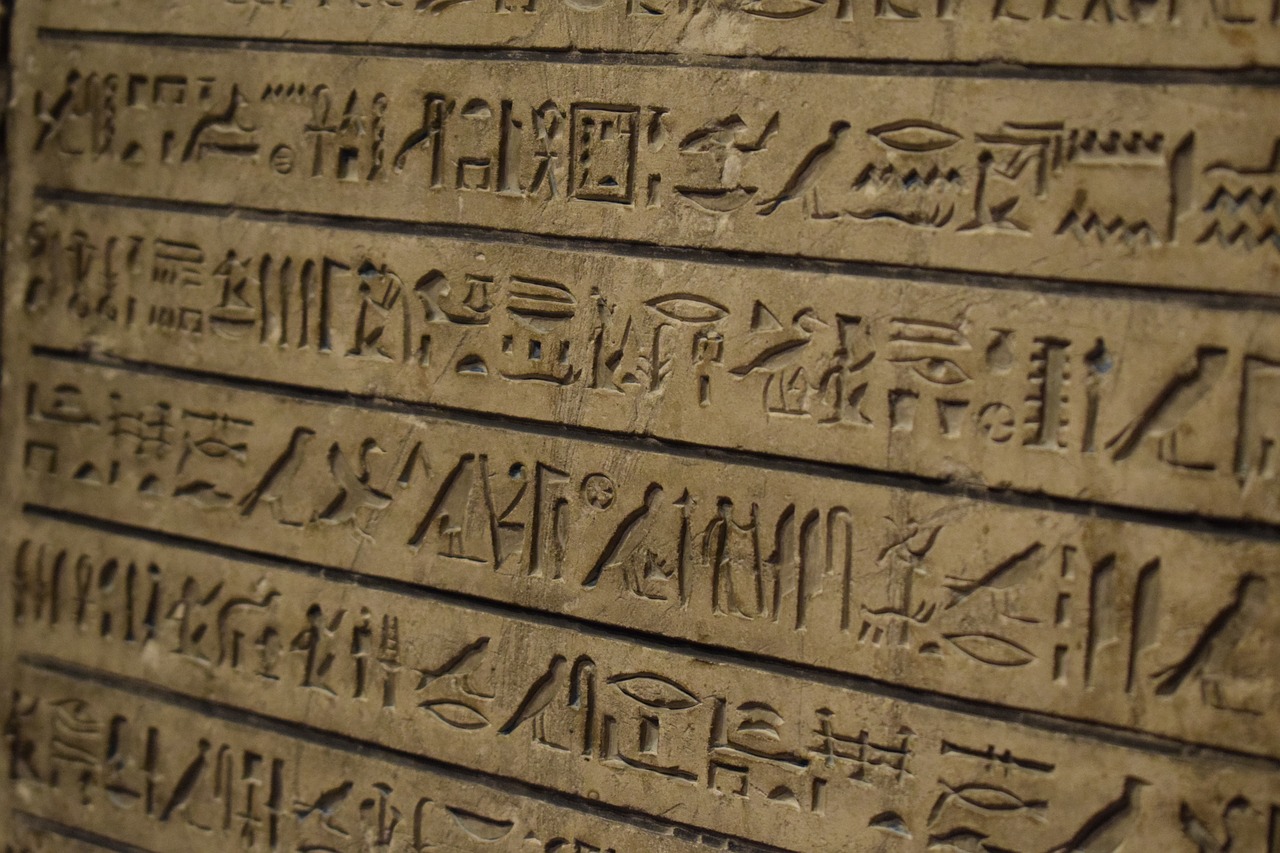
Deciphering Hieroglyphics on Papyrus
Deciphering hieroglyphics on papyrus is like solving a complex puzzle that offers a glimpse into the ancient Egyptian civilization. The intricate symbols and characters etched onto papyrus scrolls hold the key to unlocking a world of knowledge and beliefs from thousands of years ago. Scholars and archaeologists painstakingly study these hieroglyphics, comparing them to known translations and context clues to reveal their meanings.
One of the challenges in deciphering hieroglyphics on papyrus lies in the vast array of symbols and the variations in their representations. Hieroglyphics can convey multiple meanings depending on their placement and accompanying symbols, requiring a deep understanding of the language and cultural context of the ancient Egyptians. Decoding hieroglyphics on papyrus involves a combination of linguistic analysis, historical research, and archaeological evidence to piece together the messages inscribed on these ancient documents.
Researchers often use comparative analysis and reference materials to aid in the translation of hieroglyphics on papyrus. By examining similar texts, linguistic patterns, and known translations, experts can begin to unravel the meanings behind the symbols and phrases found on papyrus scrolls. The process of deciphering hieroglyphics is a meticulous and time-consuming endeavor that requires patience, expertise, and a keen eye for detail.
Furthermore, the discovery of the Rosetta Stone in 1799 played a pivotal role in deciphering hieroglyphics on papyrus. The stone, inscribed with the same text in three scripts including hieroglyphics, demotic script, and Greek, provided a crucial key to understanding the ancient Egyptian language. By comparing the Greek translation with the hieroglyphic inscriptions, scholars were able to unlock the code of hieroglyphics and expand their knowledge of ancient Egyptian culture and history.
In modern times, advancements in technology and interdisciplinary studies have further enhanced the process of deciphering hieroglyphics on papyrus. Through the use of digital imaging, spectroscopy, and computer algorithms, researchers can analyze and interpret hieroglyphic texts with greater precision and efficiency. These tools have revolutionized the field of Egyptology, allowing experts to delve deeper into the mysteries of ancient Egyptian writing and expand our understanding of this fascinating civilization.

Role of Papyrus in Modern Research
The role of ancient Egyptian papyrus in modern research is truly remarkable. Despite being thousands of years old, these fragile documents continue to provide valuable insights into the past. Scholars and researchers around the world rely on papyrus texts to deepen their understanding of ancient Egyptian civilization, language, and culture.
One of the key ways papyrus contributes to modern research is through the study of ancient languages. Hieroglyphic texts on papyrus have been instrumental in deciphering the Egyptian language, allowing experts to translate and interpret a wealth of historical documents. This linguistic analysis helps reconstruct the daily lives, beliefs, and practices of the ancient Egyptians.
Furthermore, papyrus documents serve as primary sources for studying topics such as religion, politics, and social structure in ancient Egypt. By analyzing these texts, researchers can uncover details about religious rituals, governmental administration, and societal norms of the time. This information enhances our knowledge of the past and provides a deeper appreciation for the complexities of ancient Egyptian society.
In addition to historical and linguistic research, papyrus plays a crucial role in archaeology and art history. Papyrus fragments found in archaeological excavations offer valuable clues about ancient writing practices, artistic techniques, and material culture. These artifacts help scholars piece together the puzzle of Egypt's rich artistic heritage and technological advancements.
Moreover, the digitization of papyrus collections has revolutionized the accessibility of these ancient documents. Online databases and digital archives allow researchers from around the globe to study and analyze papyrus texts without the need to handle the fragile originals. This digital preservation ensures the long-term availability of papyrus materials for future generations of scholars.
In conclusion, the role of ancient Egyptian papyrus in modern research cannot be overstated. From linguistic studies to archaeological discoveries, these ancient documents continue to shape our understanding of the past and inspire new avenues of research. The legacy of papyrus lives on through the invaluable contributions it makes to scholarship and the preservation of cultural heritage.

Legacy of Egyptian Papyrus
Ancient Egyptian papyrus holds a remarkable legacy that transcends time, leaving an indelible mark on the realms of history and culture. The enduring significance of this ancient writing material lies in its role as a vessel for knowledge, wisdom, and creativity, encapsulating the essence of a civilization that thrived along the banks of the Nile.
Through the meticulous craftsmanship of ancient scribes, the papyrus scrolls became repositories of invaluable information, ranging from religious texts and mythological narratives to administrative records and scientific observations. Each stroke of the hieroglyphic script etched onto the papyrus surface carried with it a piece of the past, offering insights into the beliefs, practices, and daily life of the ancient Egyptians.
Moreover, the artistic representations and symbolic motifs adorning papyrus scrolls served as visual narratives, conveying stories of gods and goddesses, pharaohs and nobles, and the intricate interconnectedness of life and death in the Egyptian worldview. These intricate designs not only embellished the papyrus sheets but also imbued them with layers of meaning and cultural significance.
Despite the challenges posed by time, climate, and the passage of centuries, the legacy of Egyptian papyrus endures as a testament to human ingenuity and creativity. The preservation efforts undertaken to safeguard these fragile artifacts reflect a commitment to honoring the past and ensuring that future generations can continue to unravel the mysteries held within the delicate fibers of this ancient writing material.
As modern scholars continue to decipher the hieroglyphic inscriptions on papyrus scrolls, new revelations emerge, shedding light on the complexities of ancient Egyptian language, literature, and belief systems. The legacy of Egyptian papyrus extends beyond mere historical curiosity, serving as a bridge between the past and the present, enriching our understanding of a civilization that laid the foundation for so much of human culture.
Frequently Asked Questions
- What is ancient Egyptian papyrus?
Ancient Egyptian papyrus is a writing material made from the papyrus plant, used extensively in ancient Egypt for recording various texts and documents.
- How was papyrus made in ancient Egypt?
Papyrus was made by slicing the pith of the papyrus plant into thin strips, laying them out in two layers, pressing them together, and then drying them to form a sheet.
- What was the significance of papyrus scrolls in ancient Egyptian society?
Papyrus scrolls played a crucial role in ancient Egyptian society for preserving religious texts, literature, administrative records, and providing insights into daily life and beliefs.
- How are hieroglyphics deciphered from papyrus?
Hieroglyphics on papyrus are deciphered through the study of ancient Egyptian language and scripts, utilizing knowledge of grammar, vocabulary, and context to translate the texts accurately.
- Why is the preservation of ancient papyrus artifacts important?
Preservation of ancient papyrus artifacts is crucial to protect valuable historical and cultural information from degradation, ensuring that future generations can study and learn from these documents.
- What is the modern relevance of ancient Egyptian papyrus?
Ancient Egyptian papyrus continues to be relevant in modern research, contributing to our understanding of history, culture, and language through the study of these ancient documents.




